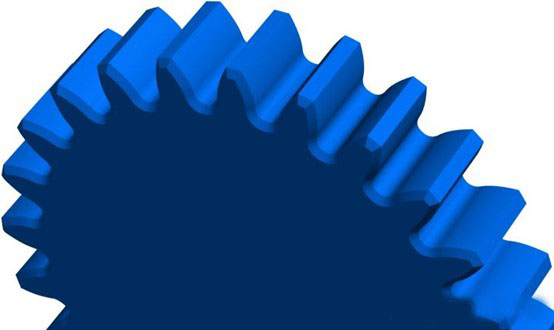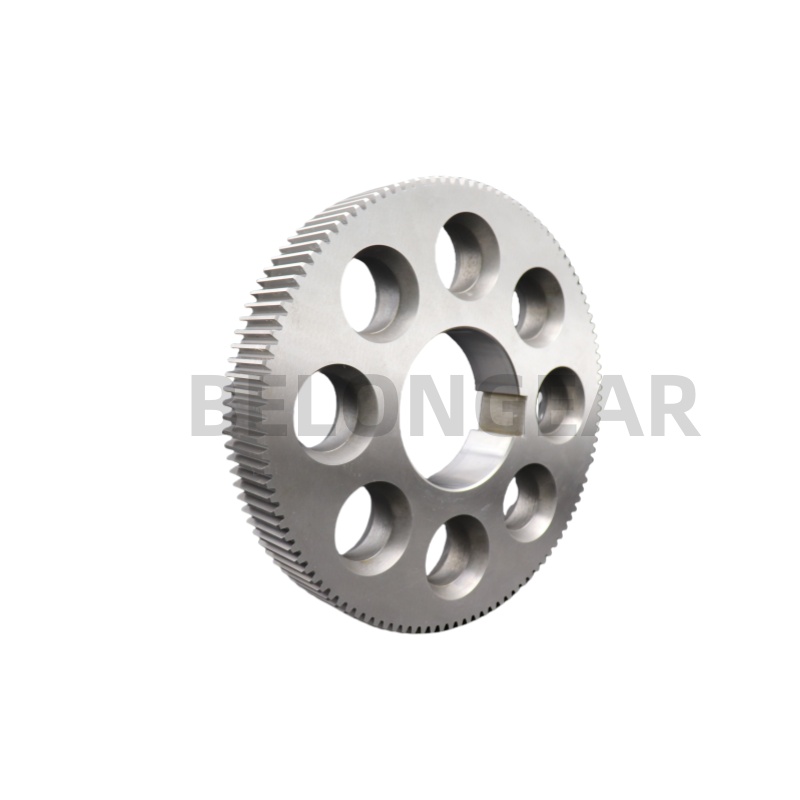Gear modification can greatly improve transmission accuracy and increase gear strength. Gear modification refers to the technological measures to consciously trim the tooth surface of the gear in a small amount to make it deviate from the theoretical tooth surface. There are many types of gear modification in a broad sense ,according to the different modification parts, gear tooth modification can be divided into tooth profile modification and tooth direction modification.
Tooth profile modification
The tooth profile is slightly trimmed so that it deviates from the theoretical tooth profile. Tooth profile modification includes trimming, root trimming and root digging. Edge trimming is the modification of the tooth profile near the tooth crest. By trimming the teeth, the impact vibration and noise of the gear teeth can be reduced, the dynamic load can be reduced, the lubrication state of the tooth surface can be improved, and the glue damage can be slowed down or prevented. Rooting is the modification of the tooth profile near the root of the tooth. The effect of root trimming is basically the same as that of edge trimming, but root trimming weakens the bending strength of the tooth root. When the grinding process is used to modify the shape, in order to improve the work efficiency, the small gear is sometimes used instead of the matching large gear to be trimmed. Rooting is the modification of the root transition surface of the gear teeth. Hardened and carburized hard-toothed gears need to be ground after heat treatment. In order to avoid grinding burns at the root of the tooth and maintain the beneficial effect of residual compressive stress, the root of the tooth should not be ground. root. In addition, the radius of curvature of the root transition curve can be increased by digging to reduce the stress concentration at the root fillet.
Tooth lead modification
The tooth surface is slightly trimmed in the direction of the tooth line to make it deviate from the theoretical tooth surface. By modifying the tooth direction, the uneven distribution of the load along the contact line of the gear teeth can be improved, and the bearing capacity of the gear can be improved. Tooth trimming methods mainly include tooth end trimming, helix angle trimming, drum trimming and surface trimming. Tooth end thinning is to gradually thin the tooth thickness to the end on one or both ends of the gear teeth on a small segment of the tooth width. It is the simplest modification method, but the trimming effect is poor. Helix angle trimming is to slightly change the tooth direction or the helix angle β, so that the actual tooth surface position deviates from the theoretical tooth surface position. Helix angle trimming is more effective than tooth end trimming, but because the angle of change is small, it cannot have a significant effect everywhere in the tooth direction. Drum trimming is to use tooth trimming to make the gear teeth bulge in the center of the tooth width, generally symmetrical on both sides. Although the drum trimming can improve the uneven distribution of the load on the contact line of the gear teeth, because the load distribution at both ends of the tooth is not exactly the same, and the errors are not completely distributed according to the drum shape, the trimming effect is not ideal. Surface modification is to modify the tooth direction according to the actual eccentric load error. Considering the actual eccentric load error, especially considering thermal deformation, the tooth surface after trimming may not always be bulged, but is usually a curved surface connected by concave and convex. The surface trimming effect is better, and it is an ideal trimming method, but the calculation is more troublesome and the process is more complicated.
Gear Modification Kit: Flexible Solutions for Performance Enhancement
At Belon Gear, we understand that not every application starts with the perfect gear setup. That’s why we offer Gear Modification Kitscustom engineered solutions designed to adapt, upgrade, or fine tune existing gear systems without the need for complete replacement.
A gear modification kit includes precision components such as modified gear wheels, spacers, shims, bushings, and alignment tools. These kits are ideal for:
-
Adjusting backlash or gear mesh
-
Upgrading material or heat treatment properties
-
Changing gear ratios to suit new torque or speed requirements
-
Extending service life or adapting to new equipment conditions
Each kit is developed based on the customer’s specific machinery, application environment, and performance goals. With the support of our experienced engineers and advanced inspection systems, we ensure tight tolerances, high compatibility, and smooth integration.
Whether for industrial gearboxes, conveyors, automotive systems, or specialized machinery, Belon Gear’s modification kits help you save time, reduce costs, and improve performance with minimal disruption.
Post time: May-19-2022






